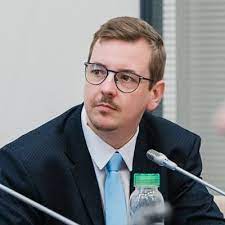In March 2022, just after the start of Russia’s special military operation in Ukraine, the cover of Time magazine, referring to conflict, was emblazoned with the headline “The Return of History”.
Perhaps the tone used by the editorial was less optimistic than the reference to Fukuyama’s “The End of History”. Although both publications explicitly revealed the pretentious, Eurocentric nature of Western thought, highlighting their colonial and racialized vision, there is another factor that has permeated public debate since early 2022: the question of time. However, its relevance and significance are often overlooked.


The sharing of real or fake photos and videos on social media has become a hallmark of press attention, making the boundaries between fact and fiction increasingly indiscernible. Over the course of this year of conflict, it became clear that anything goes when it comes to advancing a particular narrative, from video game images to the famous myth of the “ghost of Kiev”. In fact, the spectacularization of this conflict has reached levels that are unprecedented in recent history. This not only keeps Western audiences entertained daily but also fuels the NATO war machine and its voyeuristic desires with the tragedy of others.
In the face of this debate, peace negotiations have been replaced by an external verdict to the parties involved in the conflict: Russia must lose at all costs. Throughout this one year, the factor of time has been manipulated both chronologically and ideationally to achieve this goal. In the chronology of events, the mainstream narrative about the conflict asserts that Russia is losing because it failed to conquer the second largest country in Europe in a month. The imagined verdict by the West is that Putin had and has this ambition. Even if that were the case, little is said about the consequences if the Kremlin had actually pursued a strategy of total control of Ukrainian territory in a few weeks. Such a presumption may be formulated from a self-expectation of mimicking the Western modus operandi in previous conflicts.
The Western judgment has also decisively defined Moscow’s perspectives and calculations: Putin expected a “quick war and failed; soon Russia will run out of ammunition and be crushed by Western sanctions.” The pledge of the effectiveness of sanctions and their ’slow-acting effect’, in Borrell’s words, helps to compose the tale of the expected downfall of Putin. It is from this narrative that the ideational factor of time is established.
In this context, a (neo)colonial discourse is presented, which characterizes Russia as “returning” to its “Asian” or “barbaric” past and being unable to conform to the hierarchically superior standards of the West. The temporal picture that emerges from this (de)characterisation is a caricature that imagines Russia as a country stuck in backwardness and militarily inferior. Based on this reification, the sending of increasingly sophisticated weapons to Kiev is legitimized, whose intention is to convince that Ukraine is capable of imposing an indisputable defeat on Moscow, even if it means fighting “until the last Ukrainian.” That’s why accelerationist ideas and nationalist radicalism have been nourished in Ukraine for years, which has been unquestionably revealed since the Euromaidan coup.
In the current scenario, the issue of Ukraine’s accession to NATO has become secondary. The main focus is the use of the country as a Western platform for uninterrupted provocations against Russia. The promise of integration into NATO is seen by Ukrainian nationalists as an ideational element that serves to keep the conflict with Russia ongoing, continuously propelling hostilities and Kiev’s engagement in a NATO proxy war against Russia. Hence, discussions regarding Ukraine’s neutral status or a moratorium on the expansion of the Western military alliance appear to have been abandoned, despite being vital conditions for resolving the conflict.
The Western narrative depicts Putin as having an insatiable desire to conquer all of Europe, which justifies the delivery of weapons to Kiev. However, this narrative contains an inherent contradiction in the logic used to support Ukrainian nationalists. If Russia is portrayed as militarily inferior and unable to defeat a supposedly weaker Ukrainian army, how could Putin realistically have the capacity to conquer all of Europe? This contradiction highlights the self-perpetuating nature of NATO’s engagement in a “political temporisation” practice which has created a “permanent threat” discourse around Russia and fosters a mission of continuous war.
Thus, the NATO war in Ukraine against Russia has been prolonged and intensified, as increasing hostilities. If we understand violence as the acceleration of time, the longer the conflict lasts, the greater its consequences will be. Time and temporalities, in this case, are far from neutral or natural dimensions — they create narratives and define the terms of access to reality.










